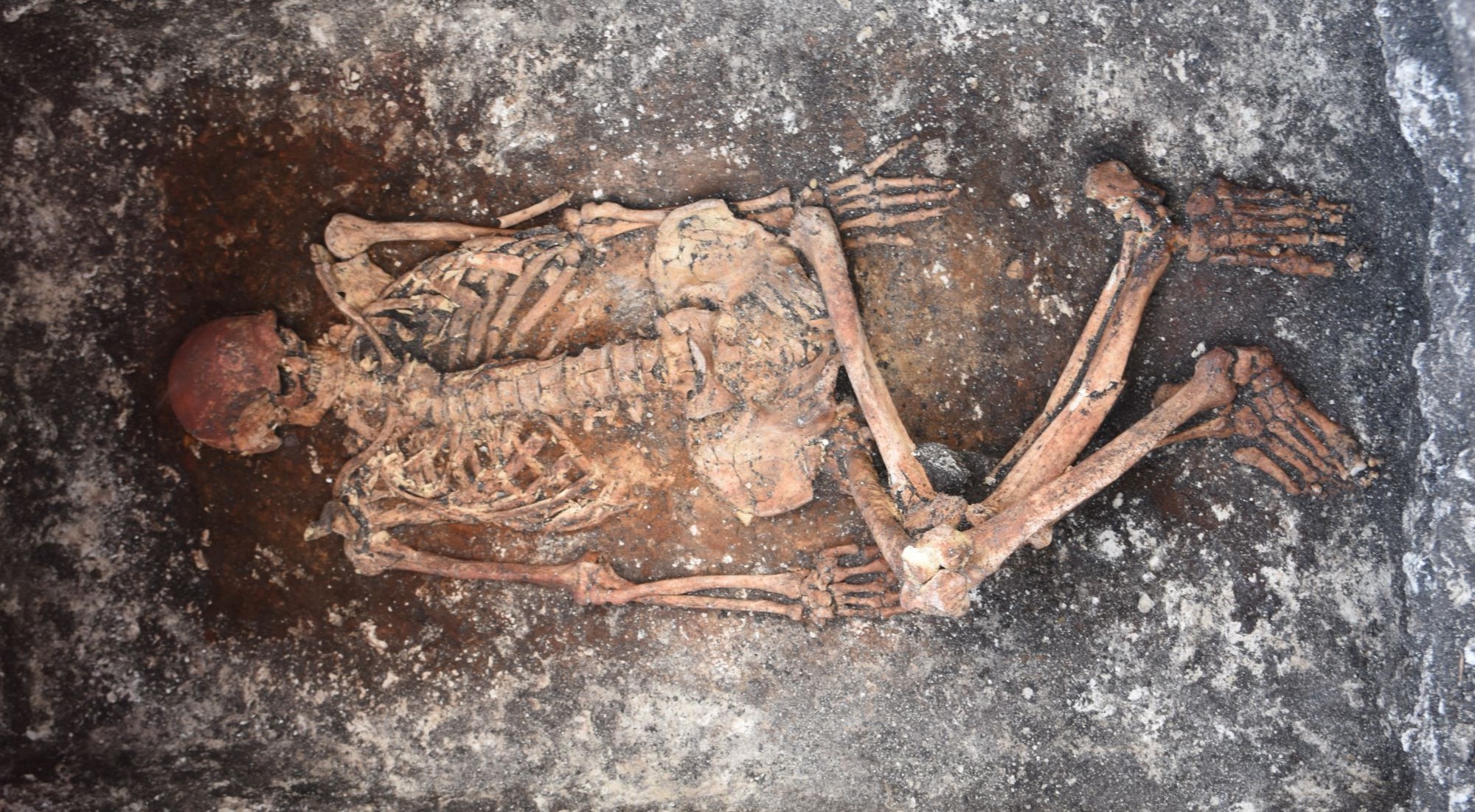

Who was the first human to ride a horse? That first rider’s distant descendents might have crossed continents and built empires on horseback. But when and where horsemanship began is not a straightforward question to answer. Horse-riding began in a time from which few equine remains survive.
As it happens, we don’t need to find the horse to find signs of people riding it. We could uncover clues from the remains of the human rider instead. A life on horseback warps human bones, and thanks to such skeletal signs, archaeologists might have found the earliest evidence of human horse-riding yet—dating from as early as 3000 BCE, as they report in a study published in the journal Science Advances today.
“You have not only the horse as a mount, but you have also the rider,” says Volker Heyd, an archaeologist at the University of Helsinki in Finland and one of the study authors. “And we were looking into the human beings.”
The skeletons in question were once people of the Yamnaya culture, living in what is now southeastern Europe, some 5,000 years ago. But because they died long before written history, there aren’t many signs of “culture” as most of us would imagine it—they might have been one ethnic group, or many. Instead, archaeologists have found evidence that the Yamnaya built similar objects and practiced similar ways of life: These people roamed the steppes, herded cattle, and drove wheeled wagons. Some scholars believe they spoke a distant antecedent of today’s Indo-European languages. Perhaps most impressively, they buried the dead beneath towering mounds that we call kurgans.
[Related: Scientists are trying to figure out where the heck horses came from]
We know that the Yamnaya had horses, but we don’t know if they merely herded them for milk and meat, or if they actually rode them. Any riding equipment—bridles and saddles—would have been fashioned from organic materials that probably long decomposed.
But horses are only one half of horse-riding. Archaeologists, perhaps, could find the other half within Yamnaya kurgans—in human bones that can tell their own stories.
That’s because “primates like us humans are not made for sitting on horseback,” says Birgit Bühler, an archaeologist at the University of Vienna in Austria. “The horse is not made to carry us.” Without a saddle or stirrups—which the earliest riders probably didn’t have—staying balanced requires repeatedly moving the lower body and thighs. With all that biological material in motion, horse-riding, just like any other mechanical movement, would leave a mark on human bones.
Over decades of repeated stress on horseback, the human skeleton changes in response. Bone tissue in the pelvis and femurs might thicken and densify. Hip bones might chafe against each other and build up calcium. Vertebrae in the spine might warp and deform. And horses might bite, kick, step on, or throw off their riders—all of which can break bones.
[Related: Ancient climate change may have dragged the wild horses away]
Researchers have dubbed these as symptoms of “horsemanship syndrome” or “horse-riding syndrome.” Other activities might cause individual changes, but the combination of these markers may be a telltale sign of a horseback life. Bühler, for instance, has used this method to study the Avars: horse-riding nomads from the Asian steppes who rode west to rule swathes of central and eastern Europe in the early Middle Ages.
Studying bones from 1,500 years ago is already difficult; studying bones that are three times older is even more so. But this study’s authors came across multiple markers of horseback riding in one 4,500-year-old skeleton from Strejnicu, Romania.
“It was kind of surprising to all of us to find that,” says Martin Trautmann, an archaeologist at the University of Helsinki, and another of the study authors.
To further confirm whether the Yamnaya rode horses, the authors examined every bone from this group that they could get their hands on, dug up from sites across Bulgaria, Czechia, Hungary, and Romania. Some remains had been excavated decades ago.
Just because they had bones doesn’t mean they had every bone. “On average, about half of the skeleton is preserved, and the half we have is sometimes heavily eroded,” says Trautmann. The authors evaluated skeletons from 24 ancient people against a list of six criteria that matched the first Strejnicu skeleton. They diagnosed four additional sets of bones—dating between 3021 and 2501 BCE—that fit at least four of horsemanship syndrome’s criteria.
We know that humans first domesticated the horse around 4000 BCE; we also know that the first chariots arose around 2000 BCE. If these skeletons are evidence of horse-riders, then they could provide a key “missing link” between the two.

“It doesn’t come that unexpected if you see the wider context of Yamnaya,” says Heyd. Archaeologists believe that the Yamnaya culture spread rapidly across the European steppe within just a few decades—in archaeologists’ time, virtually an instant. “You wonder how this is possible without horseback riding,” he says.
It isn’t definitive proof. Time’s ravages, by erasing bones, have made this certain. Bühler, who wasn’t involved with the work but called it a “fantastic paper,” points out that the authors missed one of the key criteria of other horsemanship syndrome research—the hip socket stretching, vertically, into an oval—because they just didn’t have the hip sockets to properly measure.
“It’s not their fault, because the material is not there,” says Bühler. Future finds may give archaeologists the full skeletons they need, she says. Until then, she says she is “cautious” about interpretations that these people rode horses.
The authors may just yet find those bones—their research into the Yamnaya is far from over.
